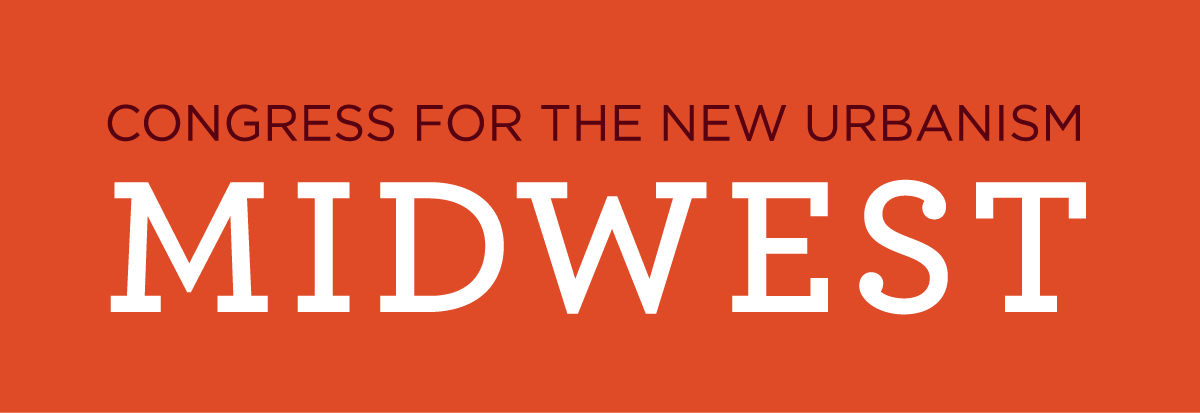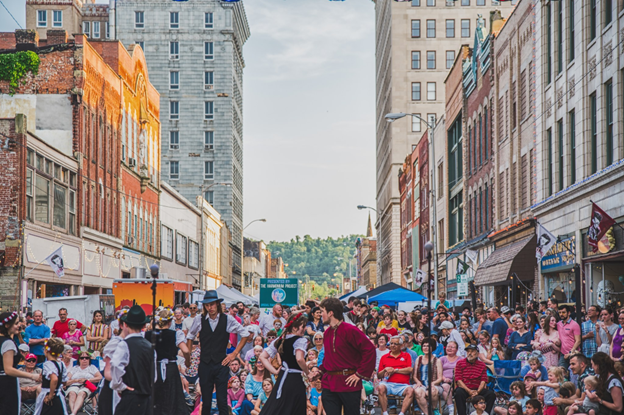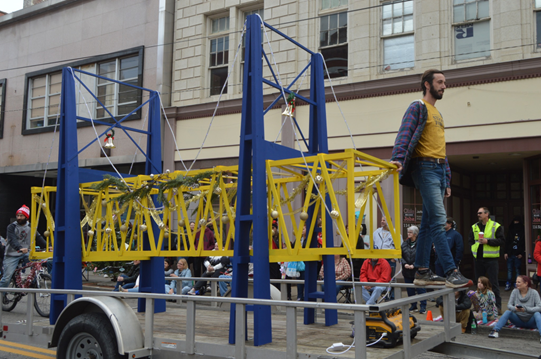Friends Before TNDs: Reflections on the Strong Towns Movement
On May 16th, 2021, I moved to Steubenville, OH: the childhood home of Dean Martin, a playground for Pittsburgh socialites in the early 20th century, and a past-center of US steel production. Originally from Florida, I moved here following military service, having been commissioned into the Air Force following my undergraduate studies in civil engineering at Florida State University. I moved to Steubenville after a number of life changing events left me destabilized, without a home or significant relationships, and soon to be without work. I knew I needed somewhere to land and I was attracted to Steubenville because of a number of civic pride and revitalization efforts taking place in the downtown (First Fridays on Fourth Street, The Steubenville Nutcracker Village, and more - all new events founded within the past 10 years).After just over two years of being in Steubenville, I founded a ‘Local Conversation’ of the Strong Towns movement, a complementary group to CNU which is largely made up of lay citizens (vs. CNU which is largely design professionals). As a civil engineer (in-training), I enjoy being a ‘world walker’ having feet in both the lay citizen and design professional worlds. It is through the experience leading Strong Towns Steubenville that I have learned the indispensability of groups like Strong Towns in the fight for good urbanism. The following are snippets of my experiences and reflections of what Strong Towns groups do and how they do it, hopefully serving as encouragement for you to join or start your own!Our June 2023 First Friday Street Festival - Most of these buildings are unoccupied!
The importance of groups like Strong Towns and other local activism groups are their long-term cultural changing powers of a place, resulting in the progressive changing of its codes and laws around development, through the changing of its people. Strong Towns groups are like the shock troops of the New Urbanism, going into a place early on, becoming part of the community, and advocating for its change. Strong Towns equips communities with the tools and resources to properly self analyze their development patterns, and ask if they want to keep going deeper into the unsustainable Suburban Experiment, or if they’d like to try some small bets and work towards traditional urbanism. This will take a long time - not months, but years. This is the commitment that all places require, but especially the Midwest, which has gone through systematic disinvestment over many decades where many communities still find themselves rudderless without their father-industry. For example, through the progressive loss of Steubenville’s steel industry, the population has shrank by more than 50%: 38,000 (1940s) to 18,000 (2020s).Slide from our 2024 Year-in-Review Presentation, featuring our car-smash fundraiser!
The Strong Towns movement gives power to rudderless communities by helping people to see that it's not big, external things, but rather the small, internal things that can save a community. Small bets, which most citizens can do without a $10k+ grant or study, include strategies as simple as community clean-ups, going to city council together, and community bike rides. These are all things we’ve done that have had massive impacts, specifically on our thinking. What I've found over the past two years is the Strong Towns way of thinking, “small bets, humbly observe where people in your community struggle, do the math, etc.,” have been taken into my person, and increasingly my friends who have been working with me in Strong Towns Steubenville. We currently have five leaders and hold monthly meetings that regularly bring out 20-30 people. It is these friendships that form around the Strong Towns movement, which are afforded to anybody and everybody, no matter the condition of one's town, that form the basis of good urbanism. These friendships are the good urbanism before it gets built in brick and stone. The serendipity, responsibility, and beauty that traditional urbanism embodies, the Strong Towns advocate must first develop that in their person and in their friendships in order for it to then be realized into the built environment at the level of the lot, block, street, and beyond.Small bets can be wild, such as building a model of a historic bridge we are trying to save for the 2023 Steubenville Christmas Parade!
Often, we in the New Urbanism promote traditional neighborhood development because of the ways in which it is more human, and allows for more human relationship - the serendipity that density allows, the independence given back to children through walkability and bikeability. We are excited at the prospect that once people live within our TNDs, they may start to become more human! However, what Strong Towns is able to say is: "We are not going to wait for the TNDs to be built to become more human. We are going to grapple with the brokenness, apathy, and imperfections of our communities as they are right now. Through building the friendships that are required to save our community, we will naturally become the people whose friendship is identified and best expressed with, traditional urbanism."Then, the Strong Towns member helps make their community one where traditional development can easily be done - the architects and urbanists can come in and help develop the community into a built environment which is already reflective of the existing friendships and culture of the place (hopefully the developers of the place might actually be the ones who have helped it change. A great shout out to the Incremental Development Alliance!). This is only possible though, through people committed to their villages, towns, and cities, willing to stick it out in often scrappy and unconventional ways. These people stand strong as they navigate the Byzantine laws that govern development in our communities, and more importantly, befriend and understand the persons who have been in charge of our Midwest communities often for decades before us. One of our first ever events. Our August 2023 ‘Cycle the City’ event which brought over 40 people downtown to ride their bikes.
Then, traditional development is not aspirational, but incarnational with respect to the place. It is putting flesh on the bones of the friendships and people that already exist in the place! This can only be done one friendship at a time! So, is there a Strong Towns Local Conversation in your town? If not, you might just be the person to start your own Strong Towns Local Conversation. Unsure where to start? Please reach out to me at strongtownssteubenville@gmail.com and I'd be happy to help![photo credits: JACOB HYMAN]
Author bio:
Jacob Hyman is a Steubenville, OH based civil-site engineer (in-training) with the Crabtree Group, Inc. a new urbanist centered engineering firm which focuses on providing site engineering services for TNDs and infill development across the country and the globe. His experience has taken him to work on projects all across the US, providing both conceptual level civil engineering oversight, and detailed construction level drawing design for TNDs. He also leads Strong Towns Steubenville, a Local Conversation of the Strong Towns group. 





